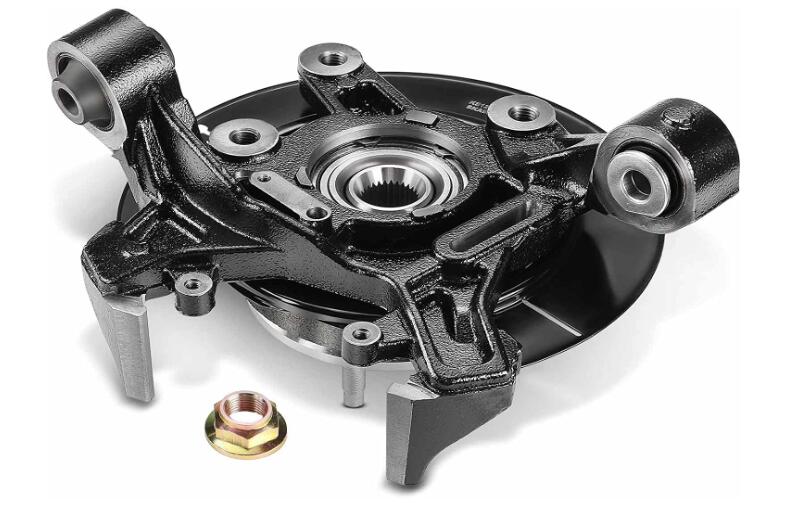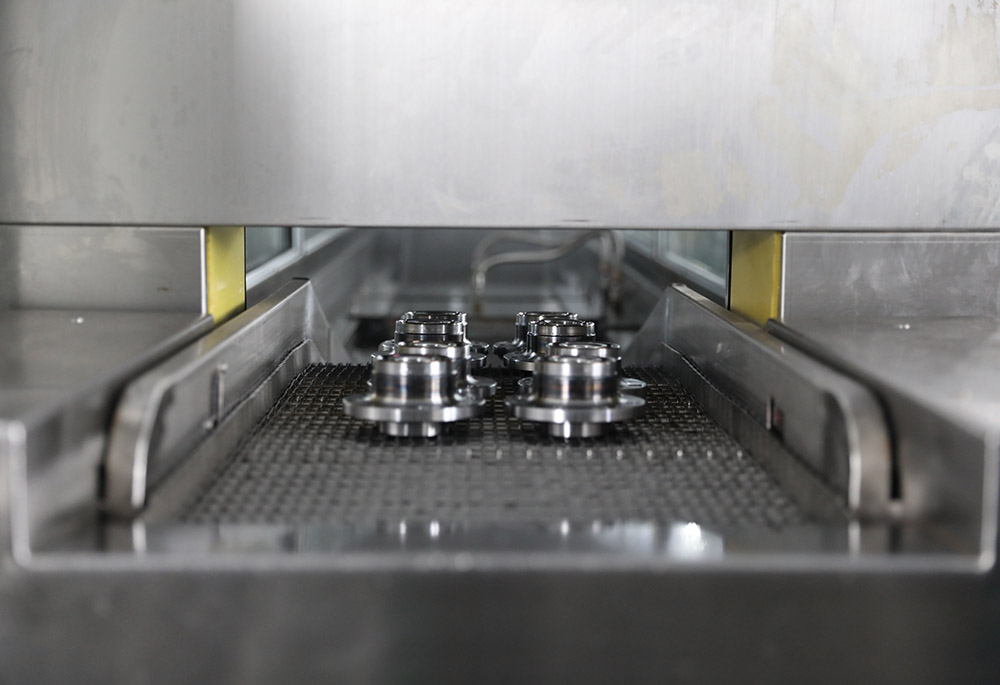Introduction: The Brazilian Aftermarket Landscape
In the heart of South America, Brazil’s automotive industry is a vibrant entity known for its robust domestic production and thriving aftermarket.
The Brazilian vehicle market comprises various segments, including domestic manufacturers such as Fiat, Volkswagen, and Chevrolet, as well as a blend of imported vehicles.
The mix of local and imported vehicles, combined with the diverse driving conditions in the country, creates a dynamic aftermarket for parts like wheel bearings and hub assemblies.
Brazil’s vast territory, diverse climatic zones, and a mix of urban and rural driving conditions require automobile components to withstand these variations.
Therefore, a manufacturer’s ability to cater to this broad range of requirements can significantly impact its success in the Brazilian market.

Market Trends: Domestic and Imported Vehicles
Analyzing the Brazilian automotive aftermarket requires a deep understanding of its vehicle composition. Locally manufactured models like the Fiat Strada, Chevrolet Onix, and Volkswagen Gol have a large user base, given their affordability and adaptability to the local environment.
Conversely, imported models like the Toyota Corolla and Hyundai HB20 offer advanced technology and comfort at a higher cost.
This vehicle mix creates a dual-demand scenario. Domestic vehicles focus on affordability and durability, whereas buyers prioritize quality and technological advancement for imported cars.
Manufacturers must balance these demands to maintain a competitive edge in the Brazilian market.

The Influence of Import Regulations and Taxation
Import restrictions and high taxation rates on imported vehicles and components heavily influence the Brazilian automotive market.
These policies aim to protect local industry and promote domestic production.
While these regulations pose challenges for foreign aftermarket part manufacturers seeking entry into the Brazilian market, they provide domestic producers with opportunities to secure larger market shares.
Understanding the tax and import structure is vital for manufacturers.
A sound strategy could involve establishing local production or partnering with domestic firms to bypass restrictive import policies.

Technological Advancements: A Game Changer
Technological innovation is making its mark on the automotive industry worldwide, including the wheel bearing and hub assembly market.
Developments like sensor-equipped innovative bearings are becoming increasingly prevalent.
These components, capable of providing real-time data on their condition, offer preventative maintenance advantages and reduce the risk of sudden part failure.
While adopting such advanced components can lead to market differentiation and increased demand, it also requires substantial investment in research and development.
Manufacturers should carefully weigh the potential benefits against this transition’s financial and technological challenges.

Online Marketplaces: The Future of Parts Sales
In line with global trends, Brazil has experienced a surge in e-commerce, transforming how consumers purchase automotive parts.
Convenience, price comparison capabilities, and access to a broader range of products drive the shift toward online purchasing.
Adapting to this trend necessitates an online presence and robust e-commerce strategy.
Despite the benefits, manufacturers must contend with challenges such as developing secure and user-friendly platforms, logistics management, and effective customer service.
Leveraging partnerships with established online retailers could be a strategic way forward.

Sustainability: Addressing the Environmental Factor
The global shift towards environmental sustainability is reshaping industries worldwide, including automotive.
In the wheel bearing and hub assembly aftermarket, this could translate into initiatives such as developing energy-efficient production processes, reducing waste, or designing more durable products requiring less frequent replacements.
While implementing sustainable practices poses upfront costs and logistical challenges, manufacturers could leverage them as unique selling propositions.
Careful planning and balancing between environmental benefits and the quality and affordability of products are crucial to success in this realm.

Navigating Future Challenges: Electric Vehicles and More
Looking forward, the advent of electric vehicles (EVs) is set to bring about significant changes in the aftermarket landscape.
The rise in EVs presents a new segment for manufacturers but necessitates specialized knowledge and skills in producing compatible parts.
Additionally, the trend towards longer-lasting components, while beneficial for environmental sustainability, could reduce the frequency of part replacements, potentially shrinking the aftermarket demand.
Strategically navigating these challenges will require innovation, adaptability, and a willingness to invest in future trends.
Manufacturers that can successfully manage this transition stand to gain considerably in the long term.

Understanding the Consumer Base
In any market, understanding the consumer base is critical to success.
Brazilian vehicle owners are known for taking pride in vehicle ownership, emphasizing aesthetics and performance.
This passion often translates into demand for quality aftermarket components, including wheel bearings and hub assemblies.
Simultaneously, Brazil’s varied socio-economic landscape shapes how consumers approach vehicle maintenance and repairs.
Car owners often prefer authorized service centers and premium parts in urban areas.
However, in rural or less affluent regions, there’s a greater reliance on local garages and more cost-effective parts.
This divide affects the aftermarket and presents opportunities for manufacturers to offer various options to meet diverse consumer needs.

Policy Changes and Market Dynamics
Brazil’s economic and political climate can also significantly affect the aftermarket.
Changes in trade agreements, fluctuations in import taxes, or shifts in government policy towards the automotive industry can have substantial impacts.
For instance, a decrease in import taxes could open the market to more foreign parts, increasing competition and expanding the variety of products available to consumers.
Similarly, shifts in economic conditions, such as inflation rates or purchasing power, can sway consumer behavior.
In challenging economic times, car owners might delay non-essential maintenance or opt for lower-cost parts.
Manufacturers need to be prepared for these fluctuations and adjust their strategies accordingly.

The Power of Branding and Distribution
As in any industry, branding, and distribution play a significant role in the aftermarket success.
Brands that have built consumer trust and recognition often have a competitive edge.
This trust can be built through consistent product quality, excellent customer service, or effective marketing strategies.
Distribution, on the other hand, determines how effectively a product can reach the consumer.
A well-distributed brand is available at various outlets, from large automotive parts stores to small local garages.
Manufacturers consider partnerships with online retailers or direct-to-consumer sales through their e-commerce platforms.

Importance of Localization and Adaptation
Localization, or adjusting your products and strategies to align with local preferences and conditions, is crucial in the Brazilian market.
Brazil’s vast geographical expanse, varied climatic conditions, and a wide range of driving conditions demand that wheel bearings and hub assemblies are tailored to suit these diverse requirements.
Moreover, consumers’ expectations vary significantly across different regions, necessitating customization and flexibility in product offerings.
Adapting to local requirements extends beyond just the product; it also encompasses elements such as marketing, customer service, and even packaging.
For instance, marketing campaigns that resonate with local culture and preferences can significantly boost brand perception and customer engagement.

The Role of Partnerships and Collaborations
Forging local partnerships and collaborations can be strategic for manufacturers, especially those outside Brazil.
Local partners can provide valuable insights into the market, aid in navigating regulatory complexities, and help establish distribution networks.
Collaborations can take various forms – from partnering with local manufacturers for production to establishing joint ventures with local businesses.
These partnerships can provide foreign manufacturers with a solid footing in the market and help circumnavigate the barriers to entry imposed by stringent import regulations.

The Drive Towards Digitalization
The digital transformation wave has swept across industries worldwide, and the Brazilian automotive aftermarket is no exception.
From digital platforms for parts sales to leveraging data analytics for market insights, digitalization is transforming how manufacturers operate.
E-commerce platforms are revolutionizing retail, providing consumers convenience, wide product range, and competitive pricing.
At the same time, data analytics tools can provide manufacturers with deep insights into market trends, consumer behavior, and the performance of their products.
Embracing these digital tools can drive efficiency, enhance customer satisfaction, and provide a competitive edge to manufacturers.

Final Remarks: The Brazilian Opportunity
Brimming with opportunities, the Brazilian wheel bearing and hub assembly aftermarket presents a promising prospect for manufacturers ready to tackle its unique challenges.
The dynamic market landscape, characterized by a blend of domestic and imported vehicles, varied consumer preferences, and changing regulatory and economic scenarios, calls for a comprehensive and flexible market strategy.
The Brazilian aftermarket can offer substantial rewards for manufacturers willing to invest time in understanding the market intricacies, adapting to local demands, and navigating the regulatory landscape.
As technology advances, consumer behaviors evolve, and the market changes, manufacturers must stay agile and responsive to ensure their long-term success in the Brazilian automotive aftermarket.
In conclusion, Brazil’s aftermarket landscape is a complex interplay of many factors.
Understanding and strategically responding to these factors is critical for any manufacturer seeking to establish or expand its presence in this vibrant market.
While the journey may be challenging, the potential rewards make it worthwhile.

Conclusion
The dynamism and potential of the Brazilian wheel bearing and hub assembly aftermarket cannot be overstated.
It represents a challenging yet rewarding terrain for manufacturers that requires a blend of strategic planning, responsiveness to market changes, and an in-depth understanding of the local landscape.
A multi-faceted approach is essential for manufacturers aiming to strengthen their foothold in this market.
They must not only offer quality and durable products but also demonstrate adaptability to local needs, forge beneficial partnerships, and embrace the potential of digital transformations.
It’s crucial to stay informed about policy changes, economic shifts, and evolving consumer preferences to adapt strategies accordingly.
Furthermore, manufacturers must leverage branding and distribution effectively while focusing on localization and sustainability.
New opportunities will arise as the electric vehicle segment grows, demanding specialized knowledge and skills in manufacturing compatible parts.
Despite its complexities, the Brazilian wheel bearing and hub assembly aftermarket represents a significant growth opportunity for domestic and foreign manufacturers.
It is a market characterized by its resilience, vibrancy, and diversity.
Manufacturers who successfully decode these market dynamics and adapt their strategies stand to gain substantially, ensuring long-term success in this ever-evolving market.
This exploration of the Brazilian aftermarket landscape underscores the importance of an in-depth and comprehensive understanding from a producer’s perspective.
It is not a market to venture into haphazardly but requires thoughtful and informed strategies.
It’s a fascinating journey filled with challenges and opportunities, but the rewards are promising for those willing to navigate its intricacies.




